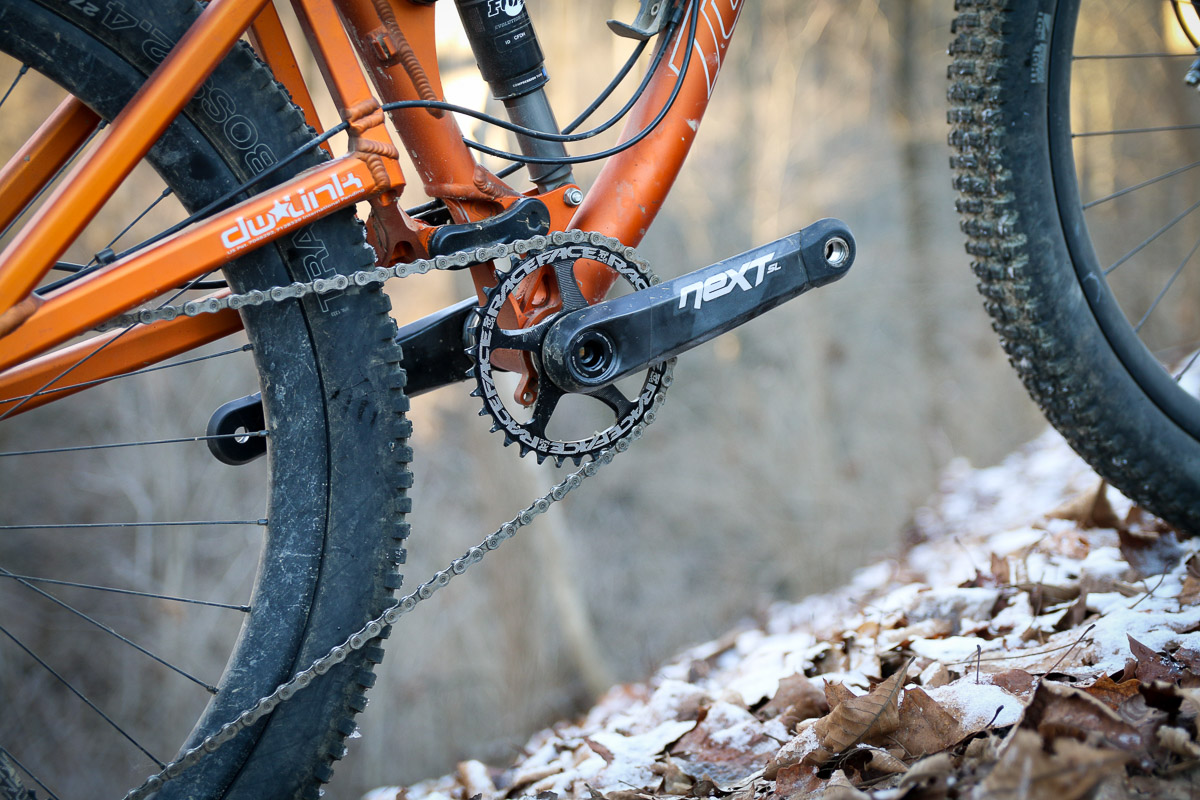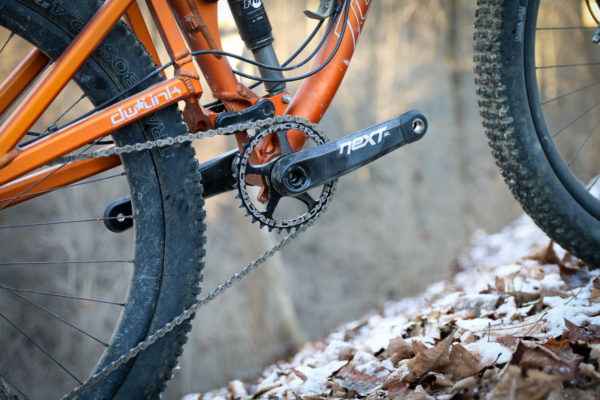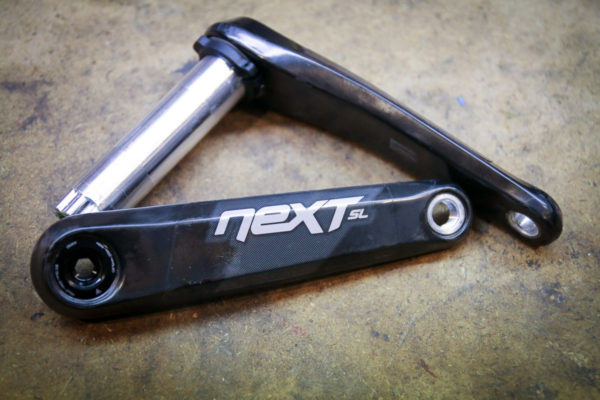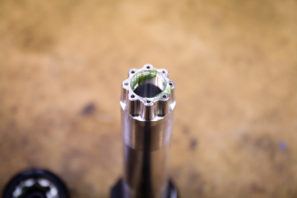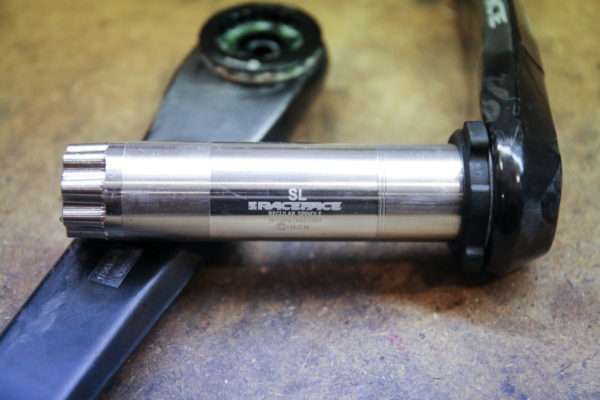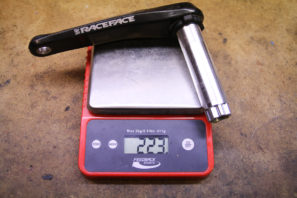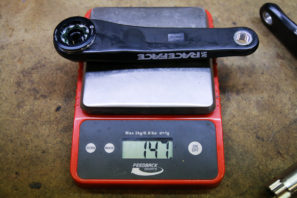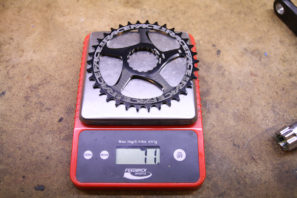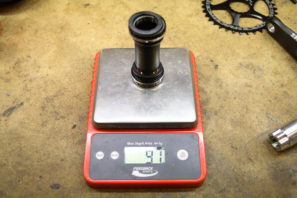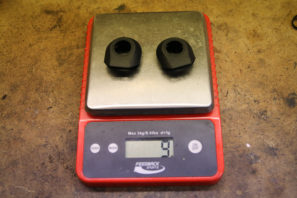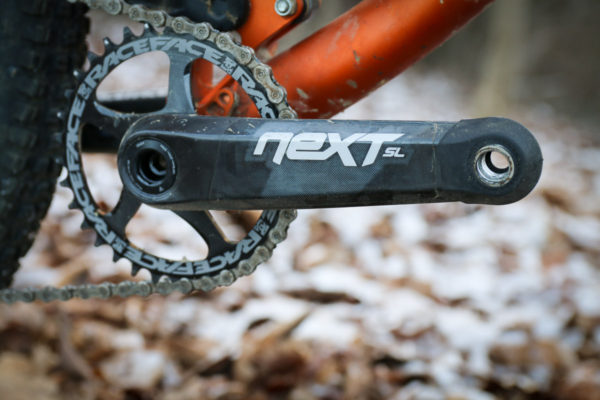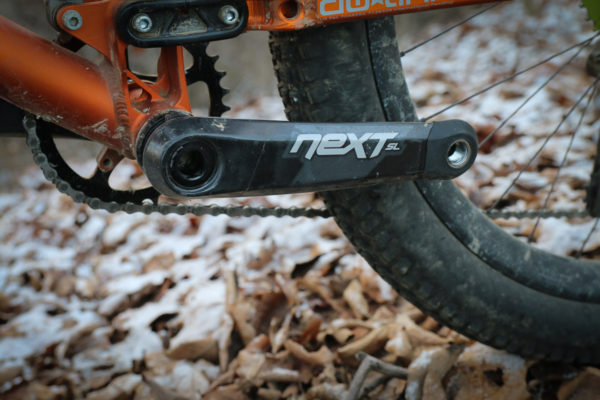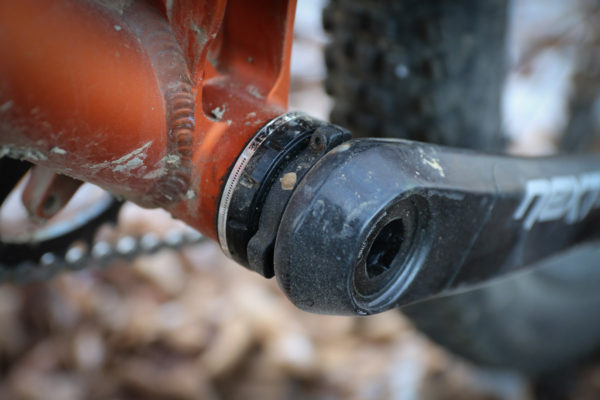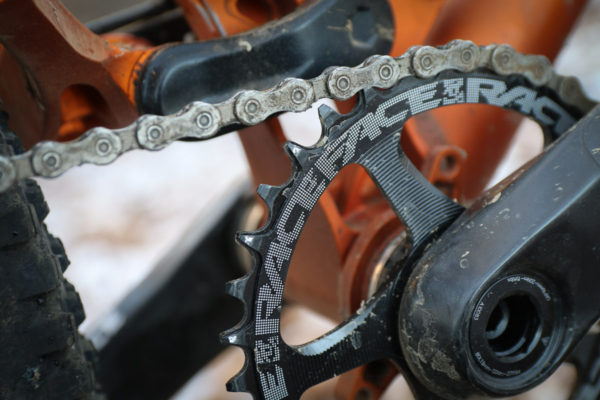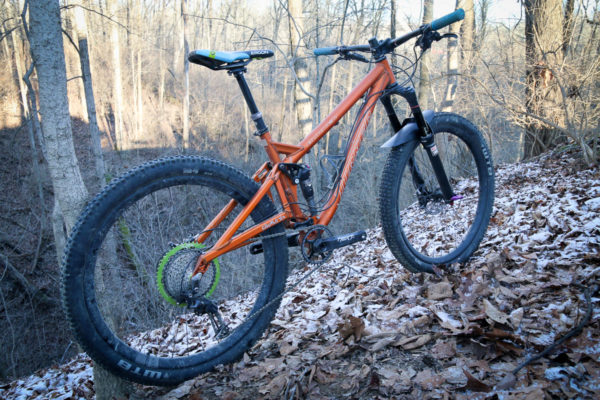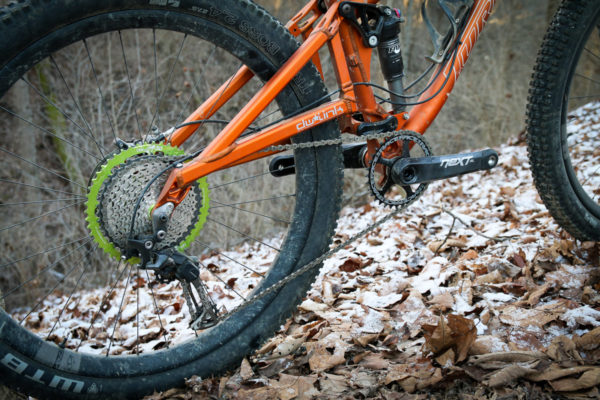Since their introduction, the Race Face Cinch cranks have quickly become some of my favorites. Much of that is due to the Cinch system itself. The modular design means that you aren’t limited to a certain fit, allowing you to change drivetrain options, adjust chainline, or switch to a completely new bottom bracket standard with little effort and a few parts. Over the years, they’ve also continued to get lighter as we all search for that perfect crank that not only performs well, but drops a few grams at the same time.
The Next SL G4 is the result of analyzing every piece of the crank to find and eliminate any extra grams from the Next SL. The result is the lightest Race Face Cinch crank available, and it doesn’t disappoint…
Using all of the light weight trickery they could muster, the Next SL G4 cranks got lighter thanks to a new arm profile, stronger aluminum pedal insert, and a new SL spindle that is even drilled out on the end. Like the other Cinch cranks, the G4 uses a replaceable 30mm diameter spindle with a bottom bracket for standard BSA threaded frames or for nearly every other bottom bracket option. That’s one of the beauties of the Cinch system. If you get a new frame that has a new bottom bracket, you can swap out the spindle or bottom bracket to fit – no need to purchase a new crank.
In this case, I’m using the standard 30mm spindle for a 68/73mm BSA shell and 175mm arms (also available in 170mm). The other part of the modular equation is the Cinch chainring which can be swapped out with a standard bottom bracket tool. One of the best features of the Cinch chainring standard is that you can flip the chainring to modify the chainline. This has become increasingly common for Boost bikes and fat bikes. You can also add a spider to run 2x if you are still holding on to that front derailleur.
One of the lightest cranks on the market that isn’t from a boutique brand, Race Face points out that the G4 is still certified for Enduro use which makes it even more impressive. On the scale the total weight of the crank with a 34t chainring and crank boots comes in a 450g, plus another 91g for the bottom bracket.
After a half year of abuse, the crank arms are still looking pretty fresh. I don’t often have issues with ankle rub, and I haven’t experienced any here either. There are a few scuffs on the crank arms, but it’s on the clear protector that comes pre-installed on each arm. I have ridden with people who mentioned that this crank specifically seemed to rub on their shoes more than they were used to, but that was not something I experienced.
The crank boots are also looking pretty fresh, but I know from experience that this is not always the case. On the Pivot Switchblade I rode in Moab, I quickly punched holes through the crank boots in the more technical rocky sections. These seem thinner than the normal boots and could stand to be made out of a harder or thicker material. Around here we don’t have much in the way of technical rocky bits that cause a lot of crank strikes, which is why these are still in great shape. Update: Rob at Race Face informed me that the boots that I received and the ones that were on the early samples for the Pivot bikes were pre-production pieces, and that the production boots have been updated with a more durable rubber. So hopefully they will be less prone to tearing.
Fitted with the 73mm BSA threaded bottom bracket, initially there was a lot of resistance in the bearings or the seals (even without any preload) but it seems to have broken in fairly well. Without the chain installed, a flick of the crank will still only spin about one full rotation, but the bearings spin smoothly. While probably not the most efficient bottom bracket, it does seem to bode well for longevity as it’s only getting better.
In that same 6 months of riding, the Race Face Cinch chainring has started showing a bit of wear to the teeth, but still holds the chain with tenacity. I’ve yet to experience a dropped chain, even in fairly aggressive and muddy riding. At Sea Otter these cranks were shown with a new carbon/aluminum chainring, but they were sent to us with the standard aluminum ring as the carbon version has apparently been put on hold.
I opted for a 34t chainring this time even though I’m typically riding a 32 on account of the rear cassette. With the 10-50 Shark adapter from OneUp, you really can get away with a bigger chainring up front and still have plenty of climbing gears. Like we’ve learned in past experiments, bigger rings in the front tend to wear more slowly which should help prolong the narrow wide tooth profile’s life.
In the end, there’s not much to say other than the Next SL G4 is an extremely light weight crank that is still massively stiff and covers nearly all the bases (XC Race, Trail, Enduro, Fat Bike, etc.). The bottom bracket probably won’t win any awards for efficiency in terms of watts, but for such a versatile crank that is almost guaranteed to drop some weight off your bike, those details are easy to overlook.
Sold as a complete crankset with a 1x Cinch chainring, the Next SL G4 goes for $499, with the bottom bracket sold separately for $59.99. You’ll also need the Race Face BB spanner tool or other 30mm BSA bottom bracket tool for the installation. The crank arms are also available without a chainring or as a double, and each version has five options for crank graphic color and another five color options for the crank boots.
